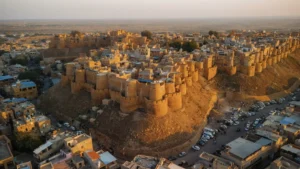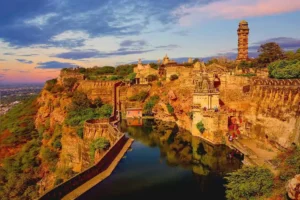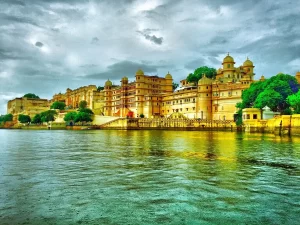Nestled amidst the serene waters of the Man Sagar Lake in Jaipur, the Jal Mahal, or “Water Palace,” stands as a mesmerizing testament to the architectural and cultural grandeur of Rajasthan. While it’s a visual delight from afar, the palace carries a rich history, unique design, and an aura of mystery that attracts countless visitors.
What is the Story Behind the Jal Mahal?
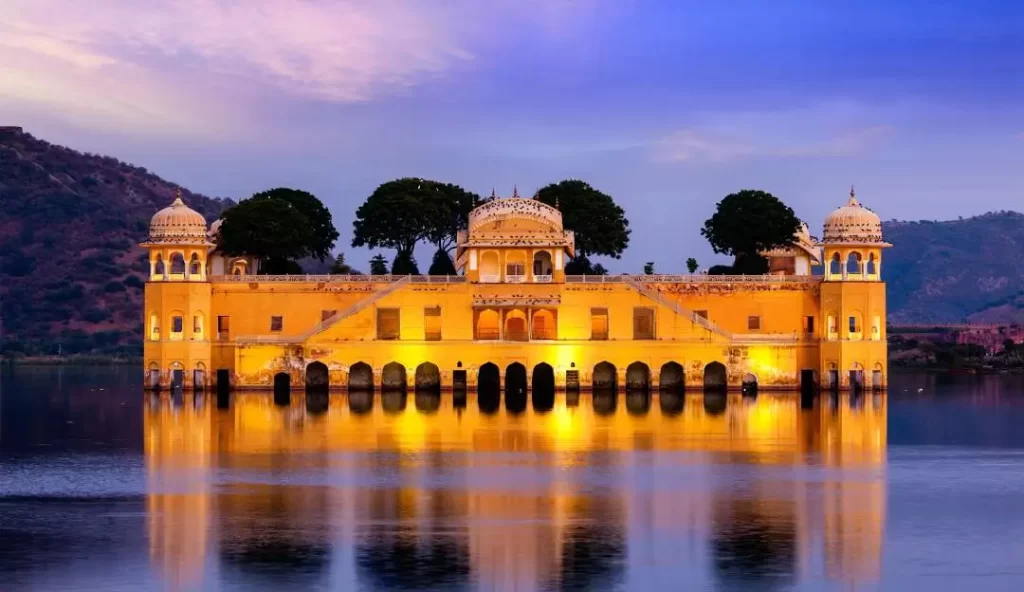
The Jal Mahal was built in the 18th century by Maharaja Madho Singh I, primarily as a hunting lodge. The area around Man Sagar Lake was a favorite for royal duck-hunting expeditions, and the palace served as a leisure retreat for the Maharaja and his entourage. Over time, the lake became a symbol of Jaipur’s engineering prowess, as it was artificially created by damming the Darbhawati River to address the region’s water scarcity.
The Jal Mahal’s history intertwines with the heritage of Jaipur, serving as a site for royal gatherings and celebrations. Despite being centuries old, its charm has endured, thanks to restoration efforts aimed at preserving its beauty.
What Makes the Jal Mahal So Unique?
The Jal Mahal is celebrated for its:
- Floating Appearance: The palace appears to float on the lake, thanks to its submerged lower levels.
- Serenity: Unlike other bustling tourist spots in Jaipur, Jal Mahal offers a tranquil setting, perfect for enjoying nature and photography.
- Blend of Architecture: The palace uniquely combines Rajput and Mughal styles, evident in its intricate carvings and delicate details.
- Flora and Fauna: The lake supports migratory birds like flamingos and herons, making it a hotspot for birdwatchers.
Why Can't We Go Inside Jal Mahal?
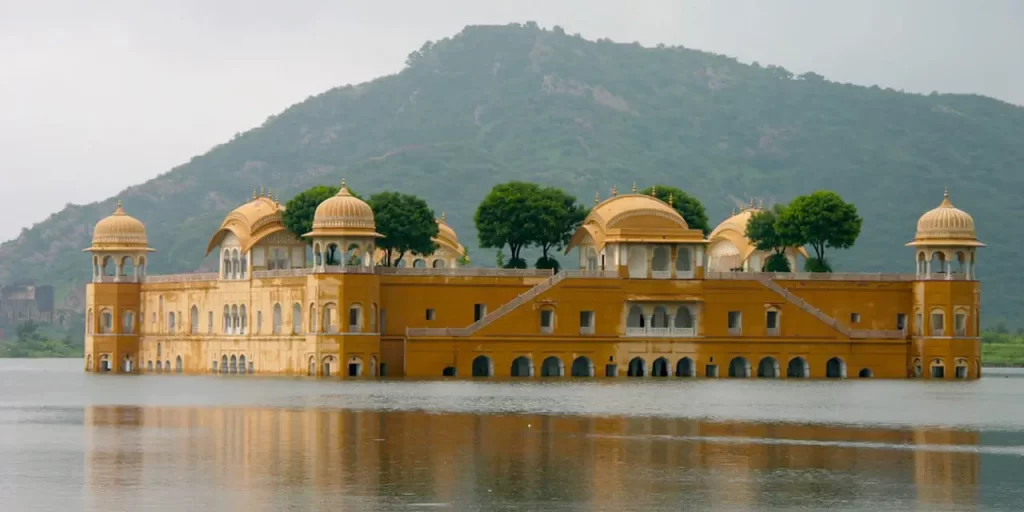
Although Jal Mahal is a major tourist attraction, its interiors remain inaccessible to the public. This restriction is due to:
- Preservation Efforts: The palace underwent significant restoration to protect its structure and historical value, limiting access to avoid damage.
- Safety Concerns: The palace’s lower floors are submerged, making it challenging to safely navigate the interiors.
- Exclusive Use: The government occasionally uses the palace for special events, ensuring it remains intact for future generations.
While you can’t step inside, a boat ride around the palace offers a stunning view of its façade and the surrounding lake.
Architecture of Jal Mahal
Jal Mahal’s design is a harmonious blend of Mughal and Rajput architectural styles. Key features include:
- Five-Story Structure: While the palace has five levels, four remain submerged under water, leaving only the top floor visible.
- Rajput Elements: Domes, chhatris (elevated pavilions), and intricate carvings reflect Rajput architecture.
- Mughal Influence: Symmetry, gardens, and decorative arches showcase Mughal aesthetics.
- Materials: Constructed using red sandstone, the palace exudes an earthy charm that contrasts beautifully with the blue waters of the lake.
Recent restoration efforts have also focused on replanting native vegetation and creating a picturesque promenade for visitors along the lake.
Things to Do at Jal Mahal
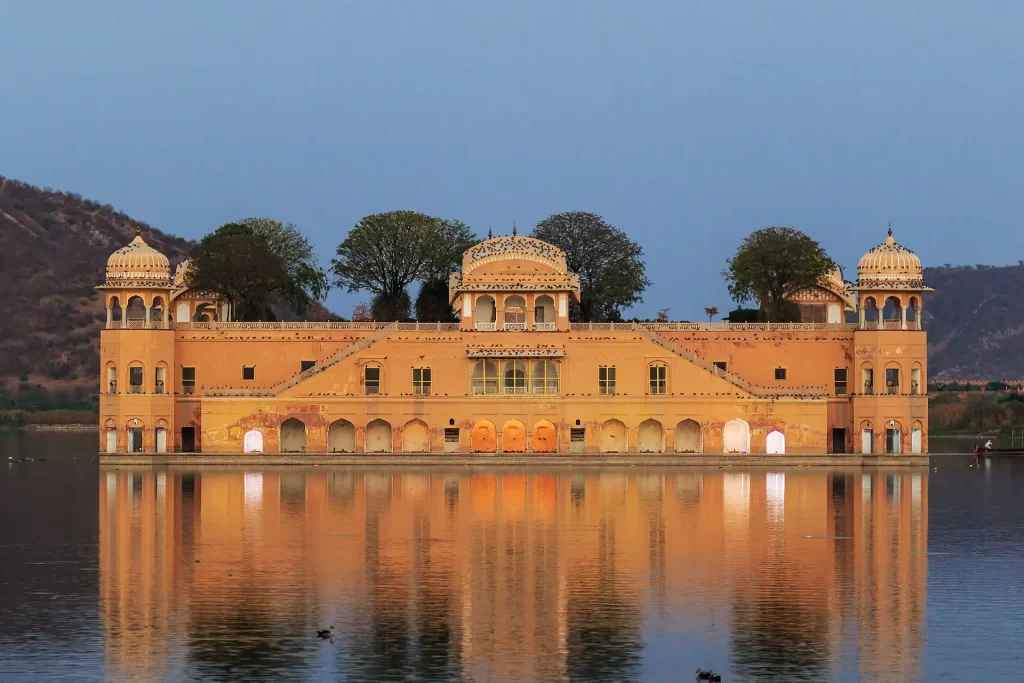
While you can’t explore the interiors, the area around Jal Mahal offers plenty to enjoy:
- Photography: Capture breathtaking views of the palace, especially during sunrise or sunset when the reflection on the water is most vivid.
- Boating: Enjoy a boat ride to get closer to the palace and appreciate its details up close.
- Shopping: Browse through local handicraft shops and stalls near the promenade for traditional Rajasthani items.
- Bird Watching: Spot migratory birds and other wildlife that frequent the lake.
- Night Views: Witness the palace illuminated against the dark sky, offering a magical experience.
Attractions Near Jal Mahal
- Amber Fort (Amer Fort): A UNESCO World Heritage Site, this majestic fort is a short drive away.
- Jaigarh Fort: Known as the “Fort of Victory,” it offers panoramic views of Jaipur.
- Hawa Mahal: The “Palace of Winds,” famous for its intricate façade, is a must-visit.
- Nahargarh Fort: Perfect for sunset views and a glimpse of Jaipur’s skyline.
- Man Sagar Dam: Located adjacent to Jal Mahal, it provides insight into the engineering behind the lake.
How to Reach Jal Mahal
Jal Mahal is conveniently located in Jaipur, making it easily accessible by various means:
- By Air: The Jaipur International Airport is approximately 18 km from the palace.
- By Train: The Jaipur Railway Station is 10 km away.
- By Road: The palace is well-connected by road, with local buses, auto-rickshaws, and taxis readily available.
Its location on the Amer Road ensures that it’s en route to other major attractions like Amber Fort and Hawa Mahal.
Best Time to Visit Jaipur
The ideal time to visit Jaipur and Jal Mahal is during the winter months, from October to March. The weather during this period is pleasant, allowing you to explore the city comfortably. Summers can be scorching, while monsoons, though cooler, may make outdoor activities challenging.
For the best experience, visit Jal Mahal early in the morning or around sunset for captivating views and cooler weather.
Location Map for Jal Mahal Jaipur
Jal Mahal is located on Amer Road, about 4 km from the center of Jaipur.
Jal Mahal Jaipur Entry Fee
- Entry to the Promenade: Free of cost.
- Boat Ride Fee: Approx. ₹50 for Indian visitors and ₹200 for foreigners. (Subject to change.)
Jal Mahal Jaipur Timings
The area around Jal Mahal is accessible 24/7, but boat rides and other activities typically operate between 6:00 AM and 6:00 PM.
Conclusion
The Jal Mahal is not just an architectural marvel but a symbol of Jaipur’s regal past. Whether you’re admiring its beauty from afar, exploring nearby attractions, or indulging in photography, Jal Mahal offers an unforgettable experience. Its picturesque setting, combined with its rich history and serene surroundings, makes it a highlight of any trip to Jaipur.
So, pack your bags, plan your visit, and let the “Water Palace” of Jaipur leave you spellbound.

